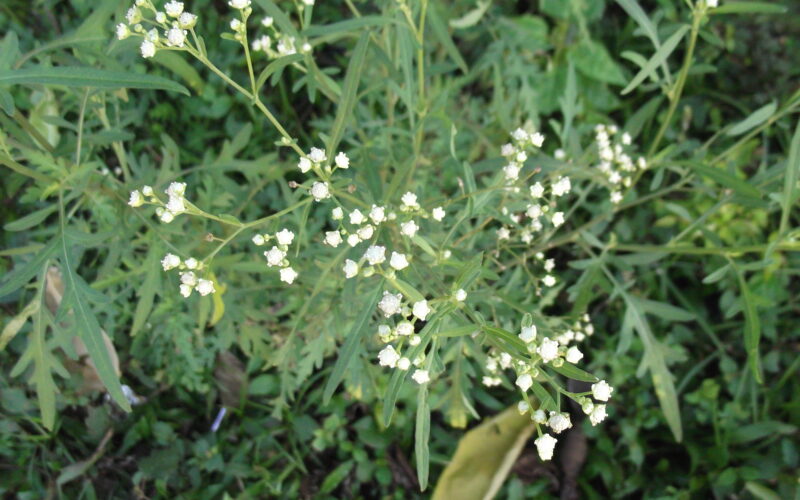Publication Date: November 2018
Parthenium, also known as Congress weed or carrot weed, significantly impacts humans and livestock. Growing up to 1.5-2 meters tall, it was first identified in Queensland during World War II and is believed to have spread to other regions through military equipment and vehicles. This invasive plant has now spread across 35 million hectares, affecting farmlands, barren lands, hills, roadsides, and railway tracks.
The weed can produce seeds within four weeks of germination, allowing it to spread rapidly. A single plant can produce 5,000 to 25,000 seeds, which germinate in various environments, including grasslands, grazing lands, parks, and residential areas, causing harm to both humans and animals.
Every part of the Parthenium plant—root, leaf, stem, and flower—can cause adverse effects. Because of its severity, the second and third weeks of August are observed as Parthenium Awareness Week each year.
Effects on Livestock
Livestock that come into contact with Parthenium while grazing suffer from skin diseases, discoloration, itching, and discharge. Consuming its leaves can cause diarrhea, liver, and pancreatic issues, reducing the quality of meat and milk.
Effects on Humans
Parthenium can cause itching, irritation, black spots, and small bumps on the skin. Inhaling its airborne pollen can lead to asthma, fever, and lung-related diseases.
Impact on Crops
The plant produces chemicals such as hymenin, histirin, ambrosin, and flavonoids that hinder seed germination and growth in crops. It also significantly reduces the productivity of grazing lands by up to 90%, affecting fodder crop production in rainfed areas.
Control Methods
- Agricultural Methods: The plant should be uprooted before flowering to prevent seed formation. Large quantities can be composted or buried. If there are many weeds in the field, they should be plowed into the soil before they flower to minimize damage.
- Chemical Control:
- Before the seeds sprout, spray a solution of 4 grams of atrazine per liter of water.
- A mixture of 200 grams of sodium chloride and 2 milliliters of soap oil per liter of water can be sprayed to kill the weed.
- Alternatively, mix 8 grams of 2,4-D sodium salt or 10 milliliters of glyphosate with 20 grams of ammonium sulfate and 2 milliliters of soap oil per liter of water and spray before the flowers bloom.
- Spraying 3 grams of metribuzin per liter of water is also effective.
- Biological Control: Release 50 Mexican beetles per plant to control Parthenium. Additionally, planting competitive crops like marigold, sorghum, sunflower, and maize helps reduce its spread.
Dr. M. Daisy, Dr. N. Akhila, Agricultural Science Center, Dr. K. Senthilkumar, Dr. M. Sakthipriya, Veterinary College, Namakkal – 637 002.










